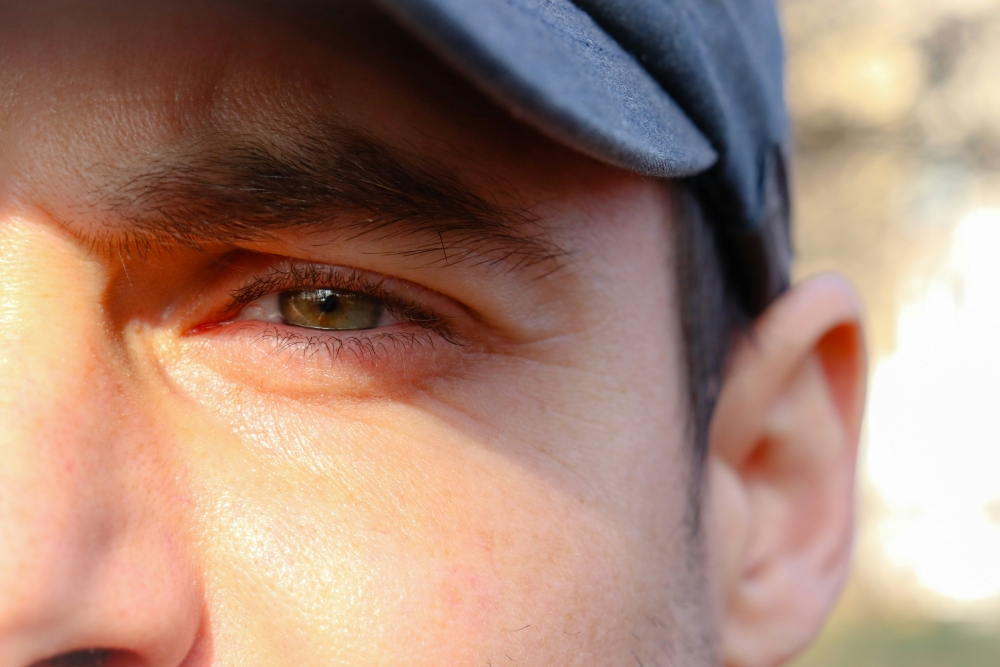Cataracts, the progressive clouding of the eye’s natural lens, are a common part of the ageing process and a significant cause of visual impairment. Beyond the gradual blurring of vision, many individuals with cataracts experience heightened sensitivity to light, a symptom that can impact their daily lives.
Often manifesting as glare and the appearance of halos around lights, this light sensitivity can make everyday tasks uncomfortable and even challenging. This article explores why cataracts cause this increased sensitivity and provides practical tips and strategies for managing glare and visual discomfort.
How Cataracts Cause Light Sensitivity
To understand how cataracts lead to increased light sensitivity, it’s helpful to appreciate how a healthy eye processes light. In a normal eye, the clear lens focuses incoming light onto the retina, the light-sensitive tissue at the back of the eye. This focused light lets us see sharp, clear images with good contrast. However, when a cataract develops, the normally transparent lens becomes cloudy and opaque. This disrupts the smooth passage of light through the eye in several ways.
Firstly, the cloudy lens scatters incoming light. Instead of a focused beam reaching the retina, the light rays become diffused and spread out as they pass through the cataract-affected lens. This creates glare, which can be particularly pronounced in bright conditions, such as direct sunlight or the glare from reflective surfaces. This can make it difficult to see clearly and comfortably, often feeling as though there is a constant haze or film over your vision.
Secondly, cataracts can reduce the overall amount of light reaching the retina. The cloudiness acts as a filter, blocking some of the light and making vision dimmer, especially in low-light conditions. This can make the eye more sensitive to sudden increases in brightness, as the already compromised visual system struggles to adapt.
Cataracts can also cause halos to appear around lights, particularly at night. This occurs as the distorted light passing through the irregular clouding of the lens is diffracted, creating rings or circles of light around light sources like streetlights or car headlights. These halos can be distracting and impair night vision, making activities like driving after dark challenging and potentially hazardous.
Practical Tips for Managing Glare Outdoors
Managing glare outdoors is often a primary concern for individuals with cataracts, especially in sunny Singapore. Here are some tips to help you manage glare when you’re outside:
- Wear polarised sunglasses with UV protection: These are your best friend against outdoor glare. Polarised lenses are designed to reduce reflections from surfaces like water and roads. Make sure they also offer 100% UVA and UVB protection. Look for labels that clearly state this.
- Choose larger sunglasses: Bigger frames give you better coverage. They shield your eyes not just from the front, but also from light sneaking in from the sides and above.
- Wear wide-brimmed hats: A hat with a good brim (at least three inches) provides extra shade for your eyes and face, reducing direct sunlight exposure. Tightly woven materials offer the best protection.
- Avoid peak sun hours: The sun’s rays are strongest between 10 a.m. and 4 p.m. If you can, limit your time outdoors during these hours to minimise glare.
- Seek shade: When you are outside for a while, make a point of finding shady spots. Trees, umbrellas, and awnings can offer a welcome break from direct sunlight.
- Consider lens tints: The colour of your sunglass lenses can also make a difference. Ask your optician for advice on the best tints for your specific needs.
Strategies for Reducing Glare Indoors
Managing glare indoors is equally important for maintaining visual comfort at home or in other indoor environments. Here are some easy ways to reduce glare indoors and make your environment more visually comfortable:
- Adjust your lighting: Avoid harsh, direct overhead lights. Instead, try using softer, indirect light sources like lamps with shades or uplighters that bounce light off the walls or ceiling.
- Use dimmers: Install dimmer switches on your lights so you can easily adjust the brightness to a level that’s comfortable for your eyes and the task you’re doing.
- Anti-glare screens for devices: If you use computers, tablets, or smartphones often, consider getting anti-glare screen protectors. These can cut down on reflections from the screen. Also, adjust your devices’ brightness and contrast settings to reduce eye strain.
- Control sunlight with window treatments: Curtains and blinds are your allies in managing sunlight. Use them to filter or block direct sunlight coming through your windows. Layering sheer curtains with heavier drapes gives you flexible control over the amount of light entering the room.
- Choose the right lamps: For reading or close work, use lamps with adjustable arms and shades. This lets you direct the light where you need it without it shining straight into your eyes. Lamps with frosted bulbs or fabric shades also help to diffuse the light and reduce harshness.

Managing Nighttime Glare and Halos
Nighttime glare and halos around lights can be particularly challenging for individuals with cataracts, often making driving after dark a difficult and potentially unsafe activity. Here are some strategies to help manage these visual disturbances:
- Avoid night driving if possible: If glare and halos impact your vision at night, the safest option is to avoid driving after dark altogether. Explore alternative ways to get around, like public transport, taxis, or asking for a ride.
- Use anti-glare glasses: If you must drive at night, consider wearing glasses with an anti-glare coating. This special coating can help reduce reflections from headlights and streetlights, potentially making the glare and halos less intense.
- Keep your windshield clean: A clean windshield is crucial for clear vision at night. Streaks and smudges can scatter light and make glare and halos worse. Clean your windshield regularly, both inside and out.
- Keep your glasses clean: Like your windshield, smudged or dirty glasses lenses will scatter light. Clean your glasses carefully and regularly.
- Look away from direct lights: Try not to stare directly at oncoming headlights when driving. Instead, focus on the lane markings or the side of the road to help you stay in your lane.
- Increase following distance: Give yourself more space between your car and the vehicle in front of you when driving at night. This gives you more time to react to unexpected situations, as glare and halos might affect your depth perception.
When to Seek Professional Guidance
While these tips can help manage light sensitivity associated with cataracts, it is advisable to consult a cataract specialist for a comprehensive evaluation and management strategies. They can help diagnose the presence and severity of your cataracts and assess how much they contribute to your light sensitivity.
During an eye screening, the eye doctor will conduct various tests to evaluate your vision, including visual acuity, glare sensitivity, and a thorough examination of your eyes. This evaluation is recommended for determining the most appropriate course of action, which may include continued monitoring, prescription adjustments, or discussing the potential benefits of cataract eye surgery.
The eye care clinic can provide detailed information about cataract surgery, including the different types of intraocular lenses (IOLs) available and what to expect during and after the procedure. They can also offer advice on managing your light sensitivity based on the specific characteristics of your cataracts and your individual needs. Regular follow-up appointments are recommended to monitor the progression of your cataracts and assess the effectiveness of your management strategies.

